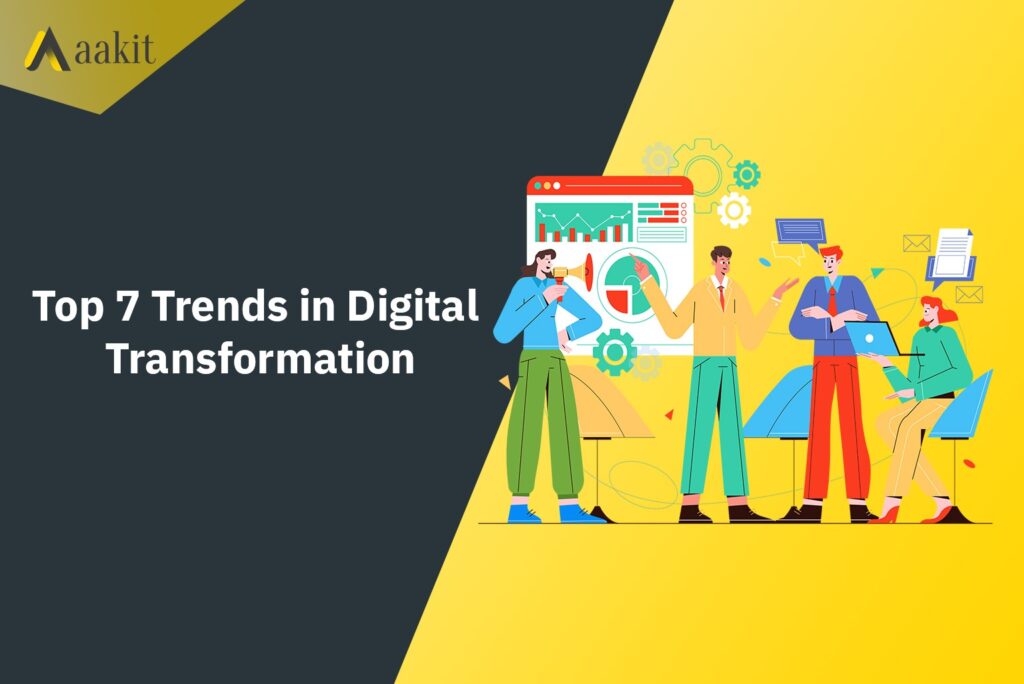Business intelligence
While business intelligence (BI) software has been around for a while, its use for improved, data-driven decision-making will skyrocket in 2022. BI software, which may give visual representations of data for greater analytics and analysis, is becoming more widely used in higher education and other areas. The trend is away from static, historical data in spreadsheets and proactive BI software-generated analysis and warnings.
Business intelligence software users will be able to ask queries about any data source connected to the software using natural language – commonly voiced rather than typed. Users can ask some BI software to provide insight and answer questions with different data perspectives based on the criteria provided, similar to asking Alexa or Siri to execute activity on a speaker or phone.
Anomalies, correlations, patterns, and trends will be detected using integrated algorithms performed against data sources by BI software users.
Based on the data studied, the results can provide predictive insights into what is likely to happen.
Artificial intelligence
Users of business intelligence software will be able to ask queries about any data source connected to the software using natural language – commonly voiced rather than typed. Users can ask some BI software to provide insight and answer questions with different perspectives of data based on the criteria provided, similar to asking Alexa or Siri to execute activity on a speaker or phone.
Anomalies, correlations, patterns, and trends will be detected using integrated algorithms performed against data sources by BI software users.
Based on the data studied, the results can provide predictive insights into what is likely to happen.
Internet of Things
We will see a tremendous increase in IoT implementations across industry sectors in 2022 and beyond. In simple terms, the Internet of Things (IoT) connects physical devices and ordinary things with sensors, actuators, embedded computers, and communication interfaces to the internet. These gadgets allow them to generate, share, and consume data without the need for human involvement across private networks or the internet. Health care (remote monitoring and patient care), industrial automation (asset tracking, predictive maintenance), smart buildings and homes, transportation (fleet management, connected cars), entertainment (augmented reality), and wearable gadgets are all examples of IoT applications. According to analysts, over 55 billion connected gadgets will be on the planet by 2025.
Despite its rapid growth, the Internet of Things has significant obstacles, including interoperability. Vendor lock-in, incompatibility across different transport protocols (e.g., WiFi, Bluetooth, Zigbee), and the lack of standards hinder IoT from reaching its full potential. The importance of IoT standards cannot be overstated. Many technology businesses and IoT platform providers, fortunately, are already working together to address interoperability by embracing standards and encouraging open-source development.
Another issue to consider is security. Attackers will have more opportunities to hack into IoT devices and enter the networks to which they are connected as the number of IoT devices grows. Most of these assaults are caused by simple security issues like weakly protected passwords, a lack of encryption, and unpatched/outdated software.
Unfortunately, device manufacturers and organizations that employ them frequently overlook IoT security. A collaborative strategy that brings all parties together to make devices and their uses more secure is required for IoT security to be effective.
Services
It isn\’t easy to look at today\’s digital world without thinking about the future of Everything as a Service, or XaaS.
At first, Software as a Service (SaaS) was used to replace homegrown IT systems with general-purpose programmes adapted to match local company needs. SaaS (such as Gmail) has decreased development costs and accelerated app deployment. Then, by managing software platforms and operating systems in the cloud, Platform as a Service, or PaaS (like Windows Azure), IT firms achieve even greater efficiency. Infrastructure as a Service, or IaaS (like Amazon Web Services), emerged as a result, with cloud providers taking over all elements of IT hardware operations and allowing businesses to move IT spending from the capital to operating expenditures.
The \”as a Service\” concept is both cost-effective and practicable. In the IT world and beyond, it will continue to evolve. Banking, communications, call centres, and site and service monitoring are currently using \”as a Service\” models. Is it possible to provide transportation as a service? With Uber, this is already the case. Expect to see more of this in the future, especially with quality assurance and rental space, which will be available in only a few hours via applications. All of this serves as evidence of specialization\’s effectiveness and efficiency.
Human-centred computing
Historically, computer scientists and engineers have driven technology development by coming up with concepts for things – search engines, services, and products – that were designed to be used as tools. The \”users,\” as engineers call them, were expected to adapt to the tools.
People have always adapted: they invented pidgin English for Google searches, endured countless adverts on Facebook, and mastered Microsoft Word\’s convoluted drop-down menus.
Expect a renewed focus on human-centred computing in the new year, both as a buzzword and technology trend. As the number of competitors grows, so does the need for technology to compete. The competition will be fierce to persuade customers, both through marketing and through personal experience, that each company\’s technology does not require a lengthy training period during which the product\’s value is restricted. In both speech and action, technology will become more human-centred. You never know; they might cease calling us users as well.
Generative AI
One of the disruptive technologies that will grow in 2022 is generative AI, which consists of algorithms that can use current information such as text, audio files, or photographs to produce new content. It can recognize patterns in current data and use them to generate related but unique material, ranging from photos and texts to protein structures.
Last year, generative AI was used to create a song called \”Drowned in the Sun,\” which was supposed to sound like a new song by Nirvana, a long-defunct grunge band. Many industries, including but not limited to health care, material science, digital media, design and manufacturing, and life science, will see rapid adoption of AI generative models.
Conclusion
Following the initial shock of the COVID-19 pandemic, many merchants have used the year 2021 to establish new strategies and re-engineer their business models in order to adapt to shifting conditions.
Companies will need to focus on managing the increased demands for sustainability and a consistent consumer experience in 2022, particularly in brick-and-mortar establishments. Customers seeking tailored and out-of-the-box solutions will increasingly turn to machine learning and artificial intelligence adaption, VTOs, and experiential retail.
Less will be more in the next year. Consumers will expect contactless payments and a frictionless shopping experience, and a growing number of businesses will use technologies like grab-and-go to meet their needs.



